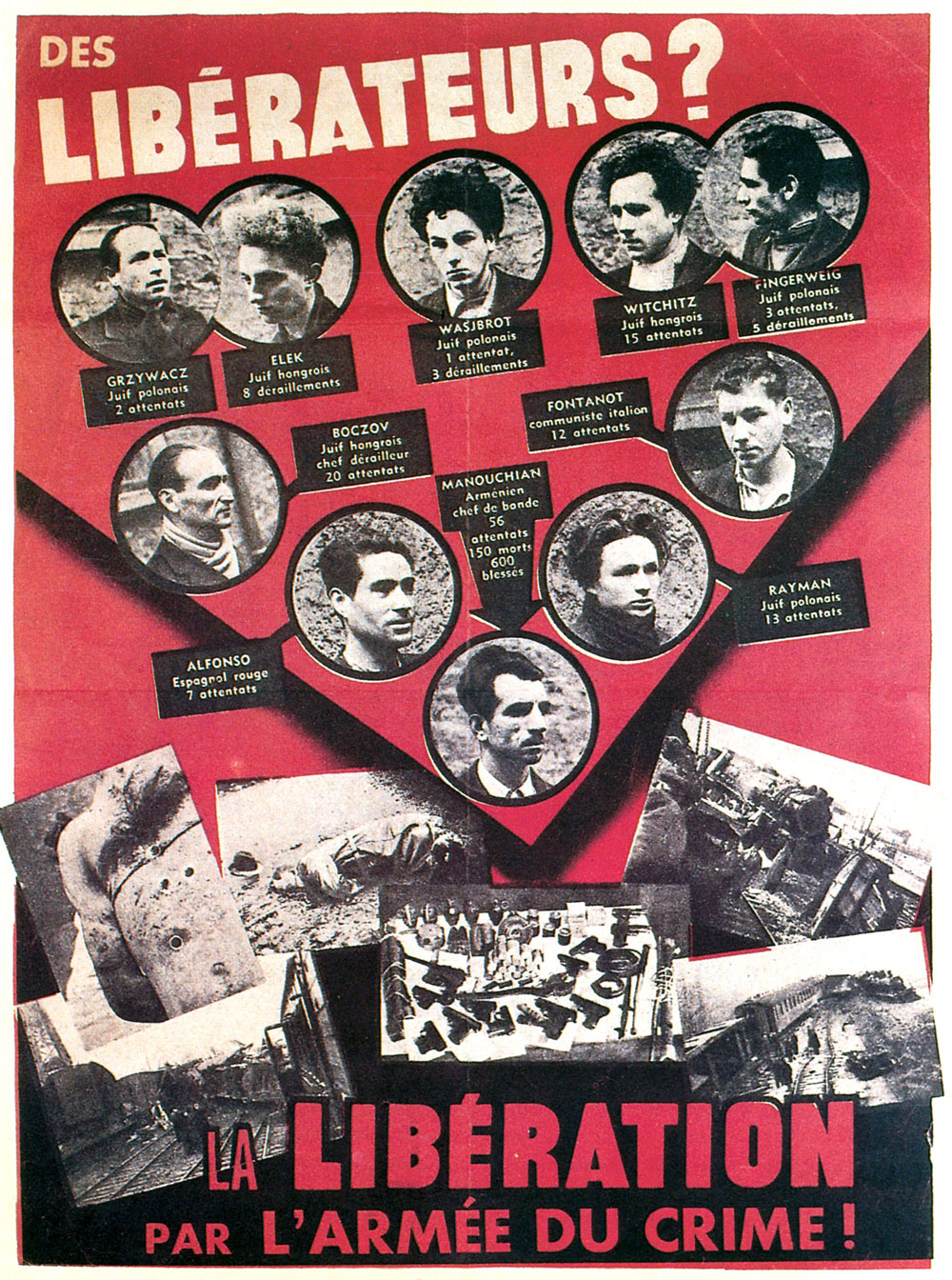“The poster that looked like a bloodstain”
L’Affiche Rouge is a propaganda poster from February 1944 produced by the Nazi administration in occupied France. It portrays the members of the so-called “Manouchian group” of the FTP–MOI. This Paris-based immigrant communist Resistance circle, led by Missak Manouchian, was discovered, arrested and placed in a show trial. The men and women of the Manouchian group were portrayed as foreign mercenaries and terrorists, as shown by the headline in the Petainist newspaper Le Matin on 19 February 1944: “The German military tribunal tries 24 terrorists who had committed 37 attacks and 14 derailments. An Armenian, Missak Manouchian, led this international gang of murderers and destroyers for 2.300 francs a month.”
L’Affiche Rouge, plastered in 120 × 80 cm format in most French towns and villages, played on the psychological mechanisms of fear and xenophobia. The layout was skillfully designed: the color red was reminiscent of blood and communism; the ten haggard faces photographed after interrogation were disturbing; under each portrait, the mention of the person’s foreign origin, their Jewish affiliation and their political party was meant to fuel racism and anti-Semitism. At the bottom of the poster, the association of the words “Army of crime” and photos of attacks and destructions helped to make these combatants look like criminals. Finally, the mocking and contemptuous expression of the slogan openly ridiculed the castigated Resistance fighters. In effect, L’Affiche Rouge was of similar visual genre to posters used in occupied Yugoslavia, most notably the one produced in Serbia, displaying on a red background a gray-scale skeleton face with a Partisan hat. The white caption says: “Liberator? No, never…”
Members of the group, among them the footballer Rino Della Negra were sentenced to death and shot at Mont-Valérien on 21 February 1944. In 1950, Paul Éluard was the first to pay tribute to the fallen. In his poem Légion (Legion), “in memory of twenty-three foreign terrorists tortured and shot in Paris by the Germans”, published in the collection Hommages, he emphasized their link with France: “They had the blood of their fellow men in their blood. These foreigners knew that it was their homeland”. Then, in 1955, Louis Aragon wrote Strophes pour se souvenir (Remembrance verses), a poem to the glory of foreigners in the Resistance, celebrating the partisans of the Manouchian group. The poem was set to music and sung by Monique Morelli in 1961, then by Léo Ferré, which contributed to its fame. Little known until the 1980’s, the history of immigrants fighting against Nazism in France has been much more researched in recent decades, and the Affiche Rouge, wich was meant to discredit them, has become a symbol for their important contribution to the Resistance in France.
Yvan Gastaut, Marie-Édith Agostini & Vladan Vukliš



